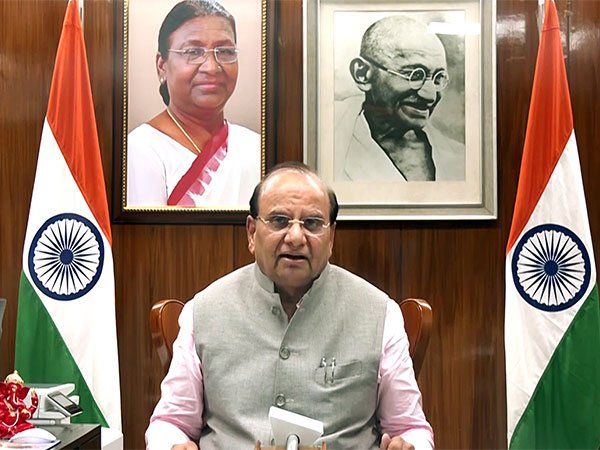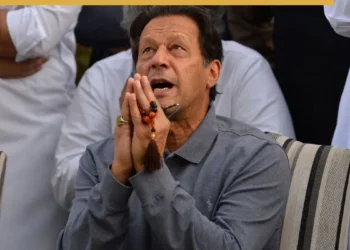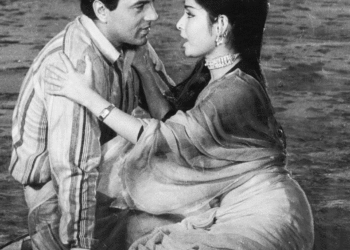BY Navin Upadhyay
On May 26, 2025, Shri Vinai Kumar Saxena marked three transformative years as the Lieutenant Governor (LG) of Delhi, a tenure that has redefined the National Capital’s trajectory. Proclaiming himself the city’s “local guardian” upon taking oath in 2022, Saxena embarked on an extraordinary journey, covering 2,850 kilometers across 1,011 visits in 1,096 days. From crumbling infrastructure to neglected heritage, from polluted rivers to garbage mountains, his relentless pursuit of progress has tackled Delhi’s deepest challenges head-on. With a hands-on approach, Saxena has not only exposed long-hidden civic issues but also catalyzed unprecedented change, revitalizing the city’s environment, heritage, and governance. As we celebrate this milestone, we reflect on how one man’s vision has set Delhi on a path to reclaim its glory as the proud capital of India.
A Hands-On Beginning
Saxena’s tenure began not with pomp but with purpose. Hours after taking office, he bypassed ceremonial formalities to inspect the dilapidated stretch from Dhaula Kuan to Indira Gandhi International Airport. Shocked by its state of neglect, he issued immediate orders for its cleanup and beautification, setting the tone for his tenure. Over the next few days, he visited critical sites across Delhi—the 57-km Najafgarh Drain, the towering garbage mountain at Ghazipur, the Bhalswa landfill, and heritage sites like Roshanara Bagh. These weren’t planned tours but spontaneous responses from a man who, as former Chairperson of the Khadi & Village Industries Commission, had seen Delhi’s decay during his travels.
Exposing Hidden Truths
Saxena’s inspections revealed a city grappling with issues rivaling those of tier-3 towns: crumbling civic infrastructure, sanitation crises, and institutional lethargy. His daily visits to slums, unauthorized colonies, and decaying heritage sites brought long-ignored problems into the public eye. From Kalandar Colony to Sangam Vihar, Saxena flagged issues like water scarcity, poor roads, and inadequate health facilities, urging agencies like the Delhi Jal Board and Public Works Department to act.
READ: Missing Arunachal Anti-Dam Activist Ebo Mili Resurfaces
His efforts pierced through years of glossy propaganda, forcing authorities to confront Delhi’s realities. While political opposition persisted, Saxena’s single-minded focus on results began reshaping the city bit by bit.
Completing three years of dedicated service, Delhi’s Lt. Governor, Shri Vinay Kumar Saxena @LtGovDelhi, who prefers to call himself, Delhi’s ‘Local Guardian,’ has helped the city chart hitherto unchartered paths. From trying to rejuvenate the Yamuna and striving to flatten… pic.twitter.com/a9VCm2Y8b1
— Raj Niwas Delhi 🇮🇳 (@RajNiwasDelhi) May 29, 2025
Reviving the Yamuna and Its Floodplains
One of Saxena’s most ambitious endeavors has been the restoration of the Yamuna River’s floodplains, under the direct control of the Delhi Development Authority (DDA). Projects like Asita (225 acres, 6,000 native trees, 35 lakh riverine grasses), Baansera (a 37-acre bamboo-themed park), Vasudev Ghat (145-meter ghat with 4 lakh grasses), Yamuna Vatiika (450 acres of green recreational space), and Amrit Biodiversity Park (145,000 trees, 3.21 lakh grasses) have transformed polluted wastelands into vibrant ecosystems. These efforts, coupled with the rejuvenation of 68 waterbodies holding 2,700 million liters, have bolstered Delhi’s environmental resilience.
 READ: First Time India Admits Loss of Jets in Clashes with Pak
READ: First Time India Admits Loss of Jets in Clashes with Pak
Though constrained in directly tackling Yamuna’s pollution, Saxena’s focus on cleaning drains like Najafgarh and Shahdara, which contribute 85% of the river’s pollution, led to improved water quality. His leadership earned him the chairmanship of the National Green Tribunal’s High-Level Committee for Yamuna Rejuvenation, though political challenges later stalled this role.
Sanjay Van, the sprawling forest in Mehrauli, has been revitalised as a harmonious blend of nature and heritage under the leadership of Hon’ble LG @LtGovDelhi Shri VK Saxena and with the efforts of DDA. Key highlights include the restoration of Qila Rai Pithora, ancient… pic.twitter.com/56WAunRu7V
— Raj Niwas Delhi 🇮🇳 (@RajNiwasDelhi) May 27, 2025
Restoring Delhi’s Heritage
Delhi’s rich history, from the Mahabharata’s Indraprastha to Mughal and British eras, had been overshadowed by neglect. Saxena’s passion for heritage restoration has breathed new life into iconic sites:
- Mehrauli Archaeological Park: Over 60 monuments, including Quli Khan Tomb and Balban’s Tomb, now interconnected with pathways, illuminated, and complemented by a rejuvenated waterbody.
- Sanjay Van: The historic Qila Rai Pithora and Anangtal Baoli have been restored, turning this forest into a vibrant urban oasis.
- Shalimar Bagh: The Mughal-era garden, once Aurangzeb’s coronation site, is being revived with restored Sheesh Mahal and cottages.
- Roshanara Bagh: A hi-tech nursery and revived lake have transformed this heritage site into a green public space.
- St. James’ Church: Delhi’s oldest church, restored to its 1836 glory, stands as a Grade II heritage landmark.
- Gole Market: Set to become “Virangana,” a museum celebrating Indian women’s achievements, by late 2024.
Transforming Urban Spaces
Saxena’s vision extended to Delhi’s parks and sub-cities. Parks like Vaishnavi, Ghata Masjid, Sadbhavna, Dilli Chalo, and Kranti Udyan have been reclaimed from garbage-filled neglect into green havens. Sub-cities like Narela, Rohini, and Dwarka have seen infrastructure upgrades, with Narela emerging as an education hub and Dwarka gaining better connectivity. The DDA, under Saxena’s leadership, reversed a decade-long financial slump, posting a ₹1,371 crore surplus in 2024-25, driven by record housing sales.
Governance and People-Centric Initiatives
Saxena’s reforms streamlined governance in a city with fragmented authorities. He fostered coordination between the Government of India, Delhi Government, and municipal bodies, ensuring Delhi shone during the 2023 G20 Summit despite flooding challenges. His “Samvaad@RajNiwas” initiative opened Raj Niwas to ordinary citizens, with thousands engaging directly with the LG.
The Dilli Gramodaya Abhiyan transformed 359 villages with ₹800 crore in projects, providing roads, drains, and PNG connections. Business reforms, including a unified licensing portal and 24×7 operations for over 1,000 units, boosted employment and nightlife. A crackdown on drugs, illegal immigration, and unnecessary litigation, alongside 42,000 permanent government jobs, underscored his commitment to governance.
Environmental and Aesthetic Revival
Saxena’s environmental push included planting 2.1 crore trees, 1.7 lakh bamboos, and exotic species like Chinar and Sandalwood, enriching Delhi’s biodiversity. The city’s aesthetic appeal was elevated with 80 beautified roads, 165 sculptures, and 150 fountains, many crafted by local artisans.
Clearing Garbage Mountains
Saxena tackled Delhi’s infamous landfills at Ghazipur, Okhla, and Bhalswa, increasing waste disposal from 4,700 MT to 25,000 MT daily—a 430% growth. Partnerships with cement companies and NHAI repurposed waste for fuel and road construction, shrinking these eyesores.
A Vision for Delhi’s Future
As Saxena completes three years as LG, Delhi stands at a crossroads. His relentless efforts have restored heritage, revived ecosystems, and empowered communities, making the city worthy of its status as India’s capital. Yet, challenges remain, and his work continues as a beacon of hope for a cleaner, greener, and prouder Delhi.













